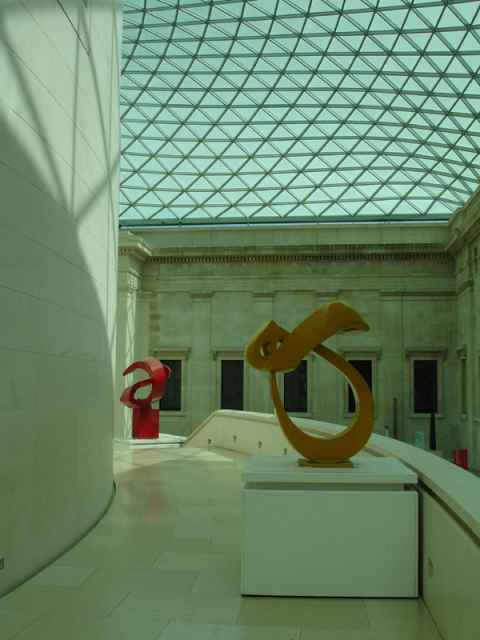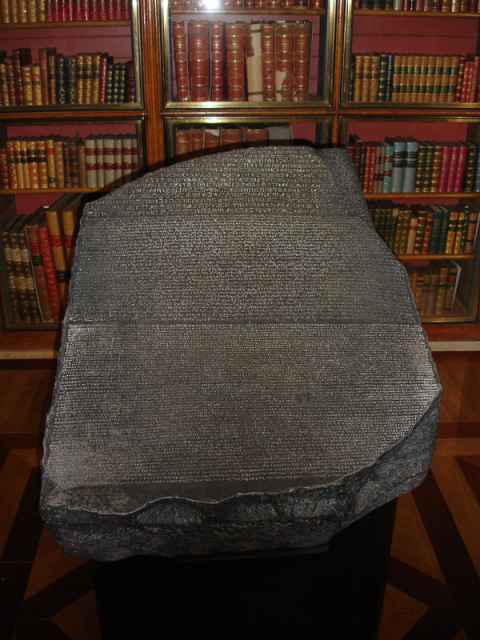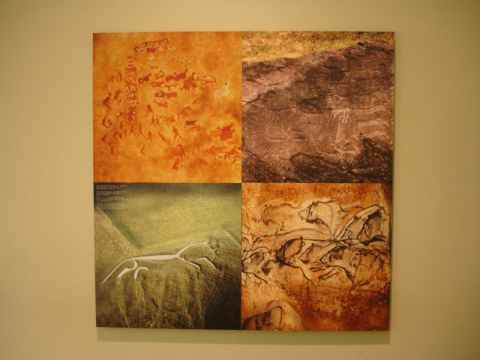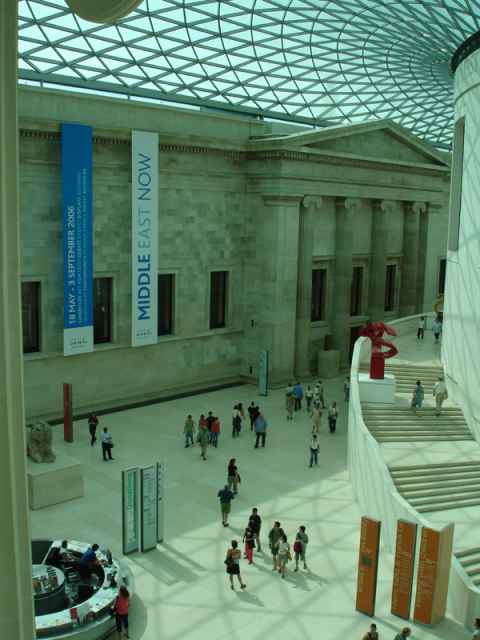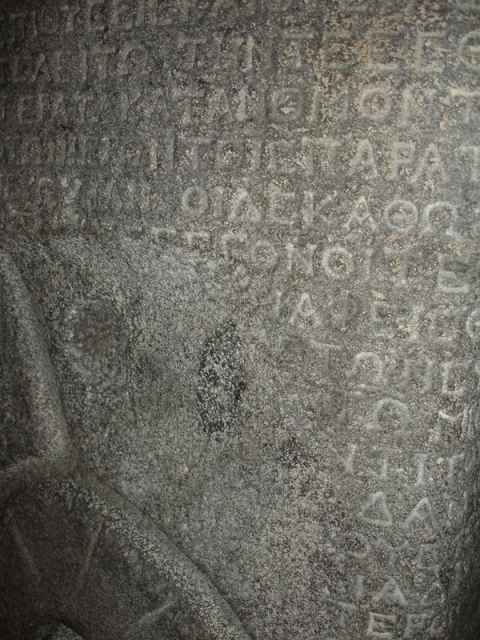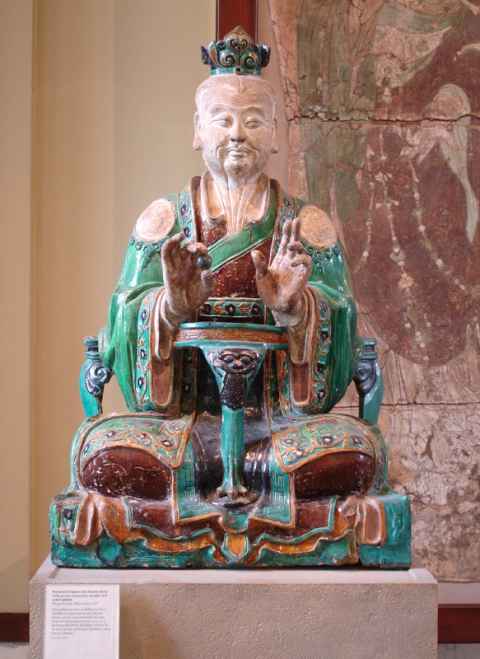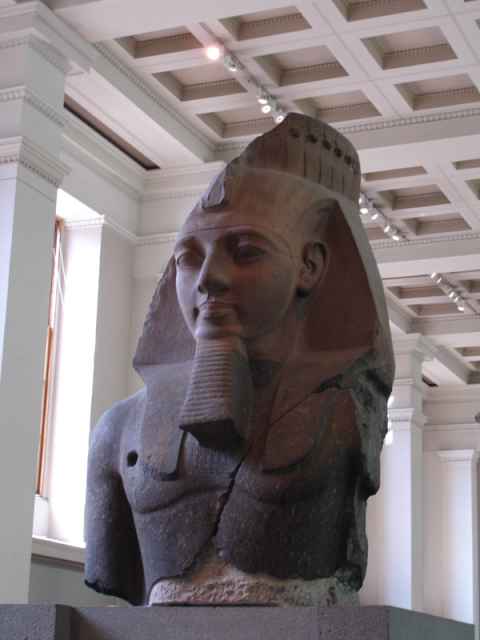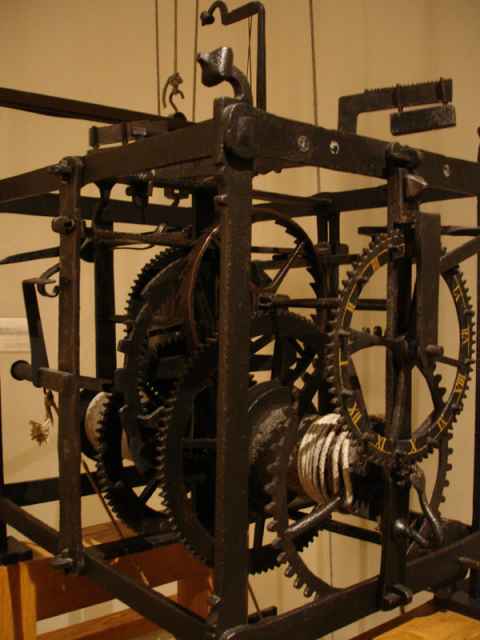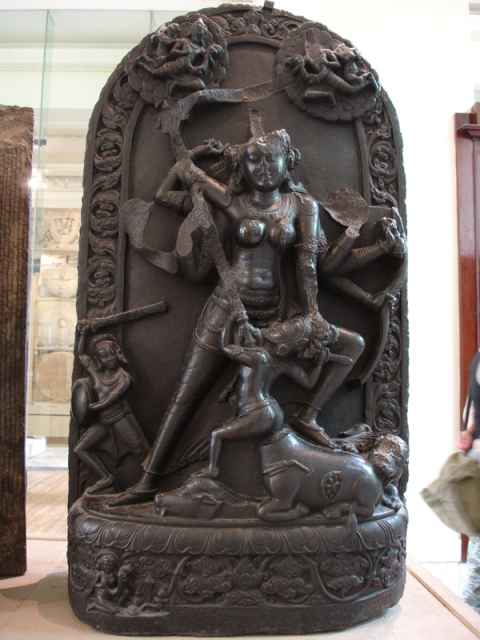
A relief depicting Durga[a]'s battle with Mahishasura[b]. Durga is essentially the wife of Shiva transformed by the gods into a goddess of destruction in order to have someone who could defeat Mahishasura. With a body forged by the most powerful gods, weapons ranging from Shiva's trident to Vishnu's discus and just a little feeling of being totally über, she made short work of the demon.
2006-07-04 13:04
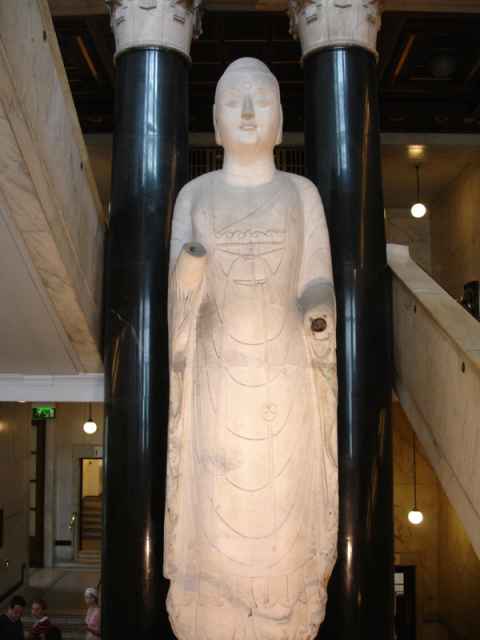
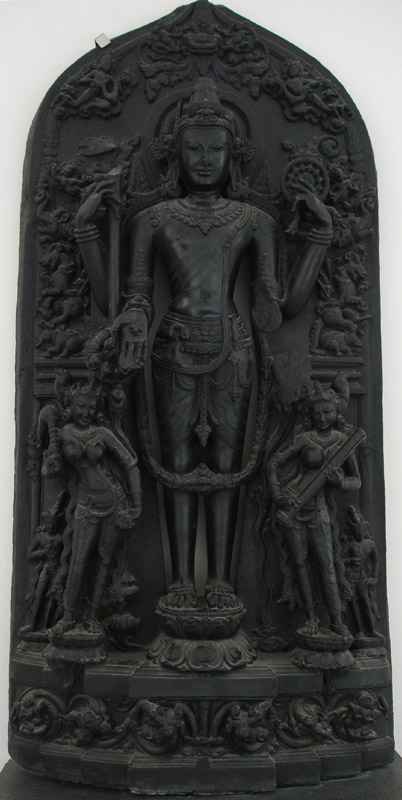
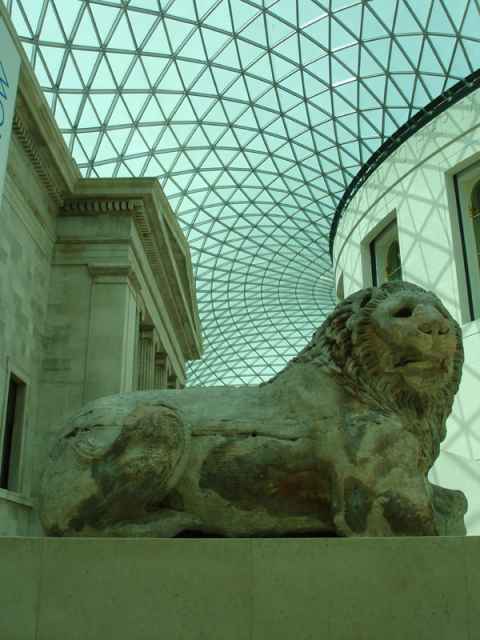
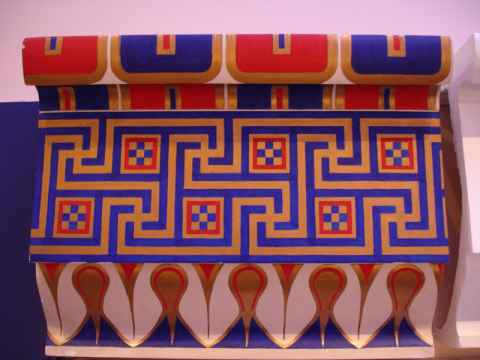
A reproduction of the multicolored decorations that greek columns originally had. This, called polychrome[c], had completely worn off by the time the ancient Greek temples were inspected by the Victorian English, and so they were left with the impression that classical architecture completely lacked color. Later analysis of the stone revealed the colorful patterns that had once been painted on it, and the replica of the Parthenon in Nashville[d] reproduces what is thought to be the original colors.
2006-07-03 14:39
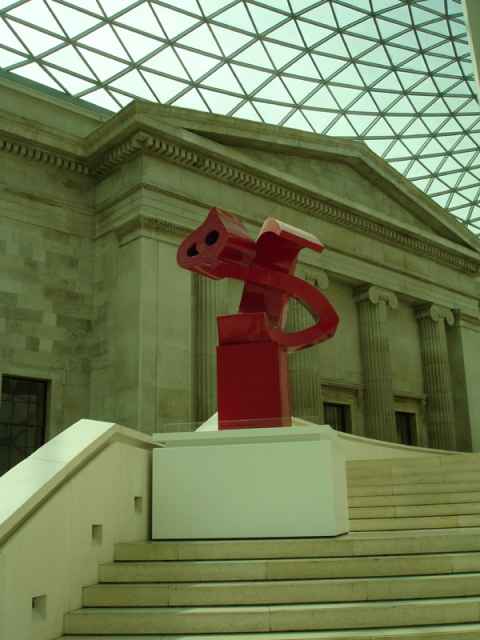
A gallery of contemporary Mid East art[e] was open. This is one of the three statues by Parviz Tanavoli on the way to the gallery. All statues depict the word "heech", meaning "nothingness", as written in farsi.
2006-07-03 14:49
